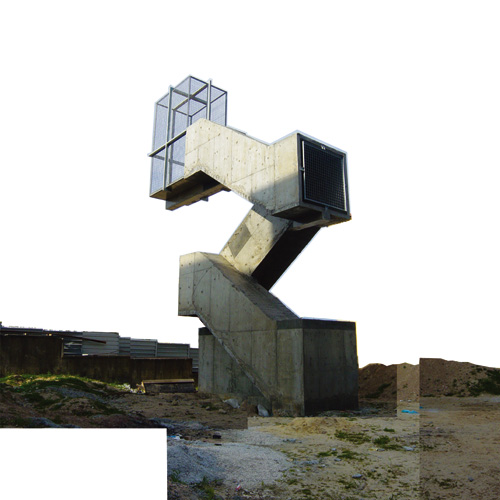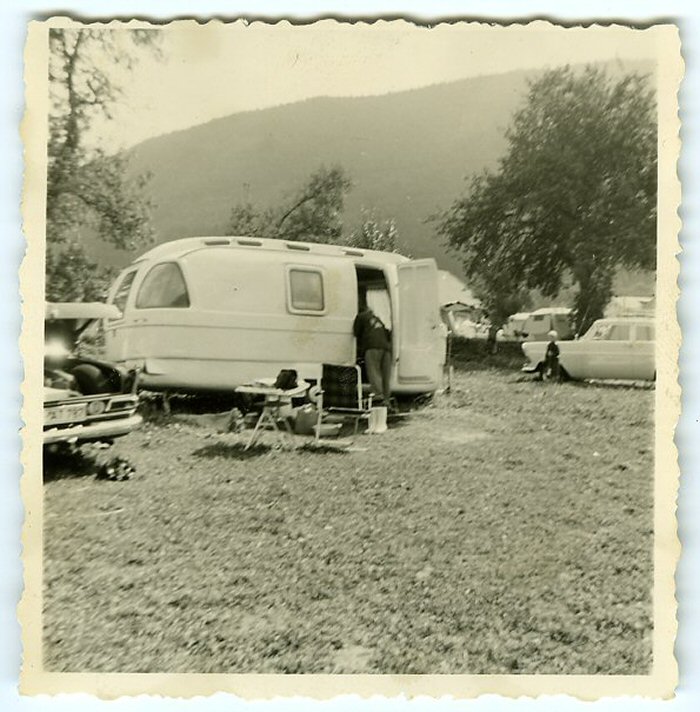Schwarz
View current page
...more recent posts

New Orleans could lose as much as 80 percent of its black population if its most damaged neighborhoods are not rebuilt and if there is not significant government assistance to help poor people return, a detailed analysis by Brown University has concluded.
C. Ray Nagin of New Orleans discussed the federal response to his city's disaster in a speech this week to fellow mayors, meeting in Washington.
Combining data from the 2000 census with federal damage assessment maps, the study provides a new level of specificity about Hurricane Katrina's effect on the city's worst-flooded areas, which were heavily populated by low-income black people.
Of the 354,000 people who lived in New Orleans neighborhoods where the subsequent damage was moderate to severe, 75 percent were black, 29 percent lived below the poverty line, more than 10 percent were unemployed, and more than half were renters, the study found.
The report's author, John R. Logan, concluded that as much as 80 percent of the city's black population might not return for several reasons: their neighborhoods would not be rebuilt, they would be unable to afford the relocation costs, or they would put down roots in other cities.
For similar reasons, as much as half of the city's white population might not return, Dr. Logan concluded.
"The continuing question about the hurricane is this: Whose city will be rebuilt?" Dr. Logan, a professor of sociology, writes in the report.
If the projections are realized, the New Orleans population will shrink to about 140,000 from its prehurricane level of 484,000, and the city, nearly 70 percent black before the storm, will become majority white.
fake bands - "Jake Austen's new book "TV-a-Go-Go" examines the fake but fascinating history of rock & roll on television. Jake drops by Music To Spazz By to discuss TV rock & rollers both historic and arcane. "
garbage scout
ust outta beta is Jim Nachlin's brilliant Google Maps mashup GarbageScout. Here's how it works: see something discarded on the streets of NYC; take a cameraphone shot then email it to GarbageScout; enjoy the detritus digitally from now until armageddon. And, in a touch residents of the Williamsburg waterfront might enjoy, the latest additions are represented by a flaming trash can. Awesome.from curbed

If you have been waiting on a trailer to live in and you wonder where it is, it is in Metairie.pls send more pictures!
All up and down those streets between the Lake Ponchartrain and Veterans Blvd. and the parish line and Bonnabel Blvd. the homes have trailers in front of them. I mean a whole bunch of them do.
I really don't know to what extent people are actually living in them (I have yet to see someone enter or leave one of them), but they are there, and unlike the few trailers dotted around New Orleans proper, they are hooked up to sewage, water, and electricity, all ready to go. I think many of the people who got them just couldn't resist how easy it was to get them and that in itself has nothing to do with how difficult it is for quite a few New Orleanians to get into trailers. Unless you are a conspiracy theorist and if you are you should give it up because believing in things you can never prove will only lead you to nocturnal outbursts as reported back to you by the person sleeping nearest. "You said 'shit' in your sleep numerous times last night."
Probably you could argue that people in need are people in need and Metairie residents are just as needy as some poor New Orleanian without a house, without insurance,or a pot to piss in. It's a good argument and you came to the wrong place if you're looking for someone to argue with. You should go home or into the other room and argue with your loved one about something that has nothing to do with what you are really mad about, have make up sex, and get back to me. Please don't tell me anything about the fight or the sex. I'm already bored and your frustrations and the heartfelt delivered explicit details about your love life might just push me over the edge.
I tried to buy beer at the Walgreens on St. Charles today. You wanna hear about frustration? Walgreens doesn't sell beer. Which to me, by itself, is worse than any conspiracy theory I could come up with, and let me assure you, I could come up with one regarding why Walgreens doesn't sell beer.
I'm spending a little more time Uptown than I normally would, and not just because this is where all the sex kittens are, but because I want to feel the pulse of the apoplectic Uptown hordes, and, I'm feeling it. Diagnosis. Simply, ya'll bitches need more beer, period. In Mid-City we may not have electricity or gas in most of the homes but we have a new convenience store opened at Canal and Galvez. If a store at that location tried to pull the "no beer" bullshit it would be the fuel for a neighborhood bonfire the next night. As for the Mid-City Walgreens, where that is? Jeff Davis and Canal? Ya'll can open up or not, I won't miss you or shop with you. Selling all those over and under the counter chemicals and getting uppity about a little alcohol...well...you make me want to...shop at Rite-Aid.
oh yeah, its in french.
Over 36 hours worth of lectures by Roland Barthes (1915-1980). The audio material available here represents the complete lectures given by Barthes during his first 2 years' teaching at the Collège de France in 1977 and 1978, and also his inaugural lecture about the question of power (and the way it is inscribed in the core of the language). [MP3s are in French] (via UbuWeb)
The initial question that he asks to himself (: « How to find the right distance between me and my neighbour in order that an acceptable social living may be possible for all of us ? ») finds a direct answer in Barthes' following proposal : the idiorhythmy as a way (as a fantasy) of living, i.e. a system in which everyone should be able to find, impose and preserve their own rhythm of life.
These lectures about living in community seem strangely refer to themes that Michel Foucault had previously dealt with. According to Barthes, power is precisely what forbids any idiorythmy because it imposes strict rhythms to individuals. The design of the paragon of an idiorhythmic way of living should be that of an anchorite or an ascetic stylite secluded on the top of his column (cf. Buñuel's Simon Of The Desert) ; on the other hand, the total rejection of idiorythmy is what will produce such communities as convents, monasteries or phalansteries (and we should also add two other types of communities that proscribe the possibility of idiorythmy to individuals, two main institutions in Foucault's works : psychiatric hospitals and prisons).
During his 1977's lectures, Barthes will apply himself to clear a path to a living-together (probably utopian), towards this fantasy of society he suggests : a society that would allow everyone to live according to his own rhythm inside the community but without being based on an extreme solitude for each individual (hard to reach, except in the case of the authentic extatic mysticism and in the case of a deep - pathological - feeling of dereliction), a society that wouldn't be based on the extreme alienation of individiuals by a power (whatever its forms) fixing strict rhythms.
via kenny g wfmu beware the blog

Other members of the committees said the executive branch communications were essential because it had become apparent that one of the most significant failures was the apparent lack of complete engagement by the White House and the federal government in the days immediately before and after the storm.
. . . . . . . . . . . . . . . . . . . . . . . . . . . . . . . . . . . . . . . . . . . . . . . . . . . . . . . . . . . . . . . . . . . .
The White House was told in the hours before Hurricane Katrina hit New Orleans that the city would probably soon be inundated with floodwater, forcing the long-term relocation of hundreds of thousands of people, documents to be released Tuesday by Senate investigators show.
. . . . . . . . . . . . . . . . . . . . . . . . . . . . . . . . . . . . . . . . . . . . . . . . . . . . . . . . . . . . . . . . . . . . .
nyt complete coverage storm and crisis

In the wake of hurricanes Katrina and Rita, HBN launched GreenRelief to initiate and assist efforts that emphasize environmental and social justice when rebuilding communities and restoring the natural environment. HBN investigator Jim Vallette has traveled to the Gulf States region repeatedly to assess the opportunities and barriers affecting green rebuilding plans. This is the first of his occasional reports. More of Jim's work can be found at http://www.greenrelief.org.
underlined artifice - One point of style in her photographs is that she leaves the black edges of the negative visible on the print. This draws awareness that the image is a work of art and it underlines the artifice of the photograph as opposed to it being a window on the world.
real estate pornado alert:
Lockhart Steele
Wednesday, January 25th, 3pm - 6pm
on Intelligent Design with Kenny G
Join Kenny G and DJ Monica on Wednesday, January 25th between 5 and 6pm for an hour of red-hot real estate porn as they welcome guest Lockhart Steele, proprietor of New York City's hottest real estate blog curbed.com. Venturing into topics never-before heard on WFMU's airwaves, Steele will be slinging the same sort of mix of savvy gossip and speculative irony that makes curbed.com tick. We'll be taking calls from listeners, either drooling with envy or frothing with anger about the one subject that everyone in the tri-state area, one way or another, is forced to deal with.
Several years ago, I built my first homemade digital camera. The idea was simple - I would take an ordinary flatbed scanner, and use it in place of photo paper with a large format camera.
My first scanner camera was made from lots of duct tape, a cardboard box, and the cheapest flatbed scanner that I could find. I expected this to be a quick little art project, one that would take a week or two at the most. But when I got my first homemade digital camera to work, I noticed that some wonderful things were beginning to happen.

Les mésarchitectures de Didier Fiuza Faustino
La Ville oblique de Claude Parent
via frenchy pilou from pushpullbar
PushPullBar architecture + design forum
BLDG
BLOG
Proclaiming that art is null was not an aesthetic judgment on his part, but an anthropological problem. It was a polemic gesture towards culture as a whole, which now is simultaneously nothing and everything, being at once elitist and crassly materialistic, repetitive, ingenious, pretentious and inflated beyond human recognition. For Baudrillard art has nothing to do with art as it is usually understood. It remains a yet unresolved issue for post-humans to deal with – if anyone in the far-away future still cares organizing another exciting panel on the future of art.
Art doesn’t come from a natural impulse, but from calculated artifice (at the dawn of modernism, Baudelaire already figured this out). So it is always possible to question its status, and even its existence. We have grown so accustomed to take art with a sense of awe that we cannot look at it anymore with dispassionate eyes, let alone question its legitimacy. This is what Baudrillard had in mind, and few people realized it at the time. First one has to nullify art in order to look at it for what it is. And this is precisely what Marcel Duchamp and Andy Warhol respectively did. By now art may well have outgrown this function, although everyone keeps acting as if it still mattered. Actually nothing proves that it was meant to persevere, or would persist in the forms it has given itself, except by some kind of tacit agreement on everybody’s part. Baudrillard called it a “conspiracy,” but he might as well have called Disneyland “the Conspiracy of Reality.” And none of it, of course, was real, except as a conspiracy. Conspiracy too is calculated artifice. Maybe the art world is an art onto itself, possibly the only one left. Waiting to be given its final form by someone like Baudrillard. Capital, the ultimate art. We all are artists on this account.
Art is no different anymore from anything else. This doesn’t prevent it from growing exponentially. The “end of art,” so often trumpeted, never happened. It was replaced instead by unrestrained proliferation and cultural overproduction. Never has art been more successful than it is today – but is it still art? Like material goods, art is endlessly recycling itself to meet the demands of the market. Worse yet: the less pertinent art has become as art, the louder it keeps claiming its “exceptionalism.” Instead of bravely acknowledging its own obsolescence and questioning its own status, it is basking in its own self-importance. The only legitimate reason art would have to exist nowadays would be to reinvent itself as art. But this may be asking too much. It may not be capable of doing that, because it has been doing everything it could to prove it still is art. In that sense Baudrillard may well be one of the last people who really cares about art.
from : lotringers introduction to baudrillards conspiricy of art
Ho-Tah-Moie or Roaring Thunder (john stink)

Sainte-Bernadette du Banlay. Nevers, France (1966) Paul Virilio and Claude Parent
Foreword
by Paul Virilio
"Contemporary civilization differs in one particularly distinctive feature from those which preceded it: speed. The change has come about within a generation," noted the historian Marc Bloch, writing in the nineteen-thirties. This situation brings in its wake a second feature: the accident. The progressive spread of catastrophic events do not just affect current reality, but produce anxiety and anguish for coming generations. Daily life is becoming a kaleidoscope of incidents and accidents, catastrophes and cataclysms, in which we are endlessly running up against the unexpected, which occurs out of the blue, so to speak. In a shattered mirror, we must then learn to discern what is impending more and more often-but above all more and more quickly, those events coming upon us inopportunely, if not indeed simultaneously. Faced with an accelerated temporality which affects mores and Art as much as it does international politics, there is one particularly urgent necessity: to expose and to exhibit the Time accident.
paul virilio the accident of art

The fight ended without fanfare. For 123 of the most heavily damaged structures, almost all in the Lower Ninth Ward, New Orleans officials have agreed to give seven to 10 days' notice before bulldozing. The city will publish an advertisement over three days in The Times-Picayune listing the addresses of the affected properties, will post a warning on the its Web site and will try to contact the owners by mail.
The warning will specify that officials intend to "demolish or haul away" the property. Owners have a right to challenge the demolitions in the seven- to 10-day window.
For 1,900 houses less seriously damaged, but still considered in imminent danger of collapse, the city will give 30 days' notice.
cedar creek treehouse
vw 1967 deluxe model so-44 campmobile
via zoller
portland oregon socialites 1955


